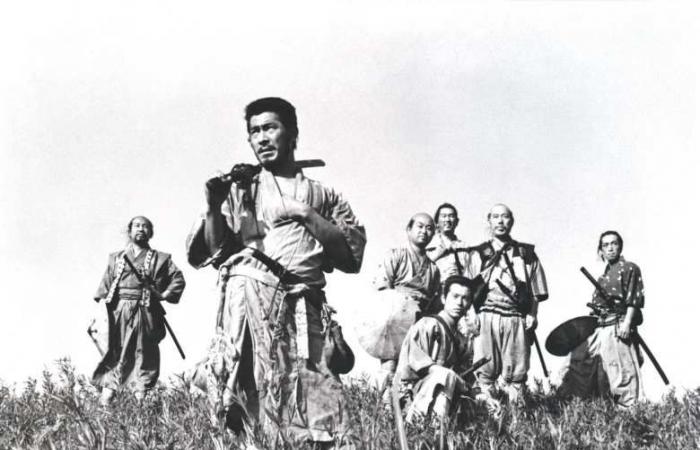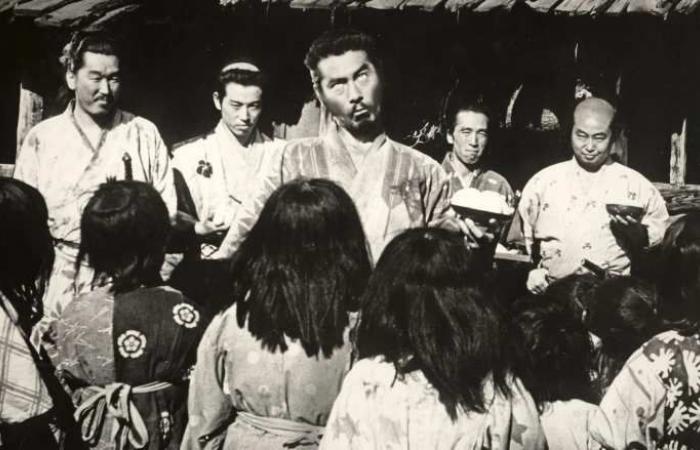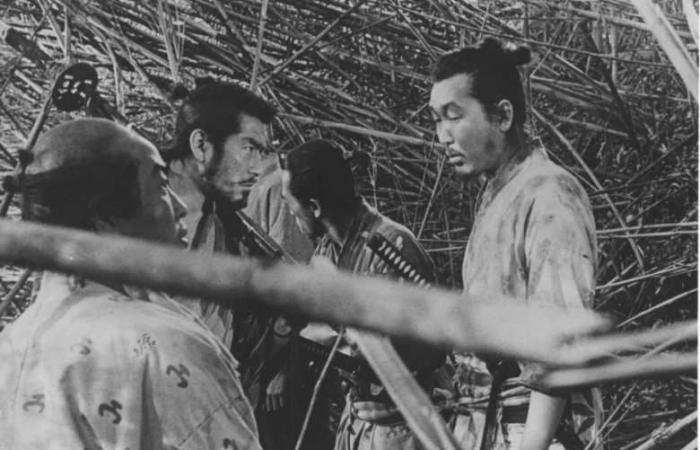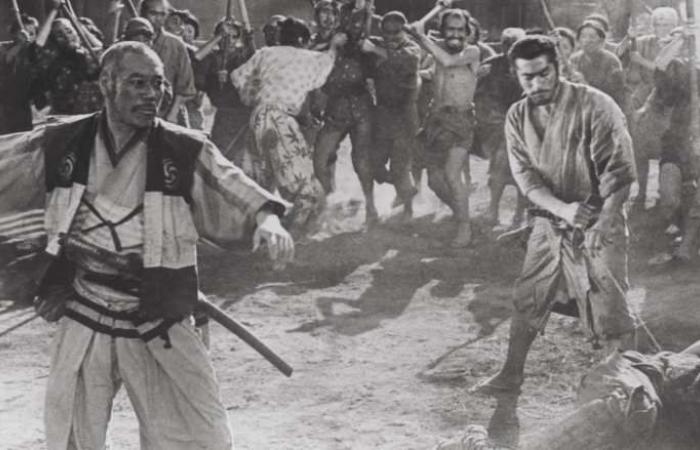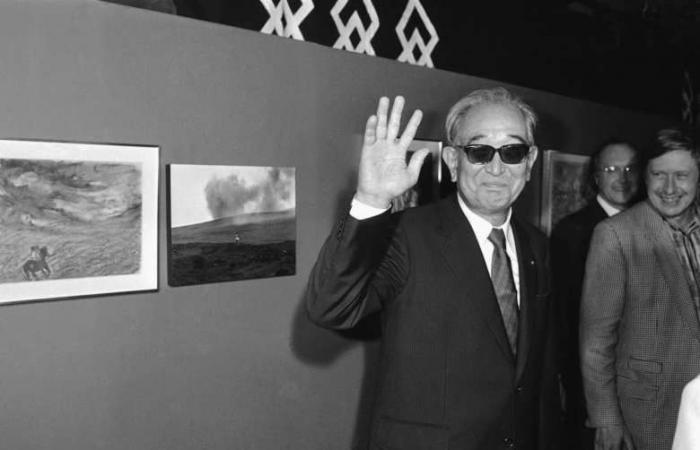Of Star Wars from George Lucas to the saga Rebel Moon from Zack Snyder, going through the classic western The magnificent 7 by John Sturges. The truth is The seven samurai, with 70 years behind them, have definitively influenced cinema, as it is known today. Much more, the film has become the central point of a way of understanding action, tragedy and redemption, which is still novel. Specifically, when the scenario that Akira Kurosawa poses in his film, It is timeless and without a doubt, can be delved into any genre.
The result is a neat, exciting and complex film, which goes beyond just being a classic Japanese story. At the same time, it’s about the way the director delves into the wounds of his country, traumatized by the events surrounding his defeat in World War II. Kurosawa tried to bring atomic fear, the violence of the American occupation and the collective humiliation of failure, to a terrain in which he could give it a second meaning. What makes The seven samurai, in a story closer to the symbolic than to the historical drama.
Also, in the best representation of the splendor of Asian cinema in the 1950s. The feature film is a mix between the traditional vision of good and evil of Japanese culture and a bolder version, about the sense of honor. Which makes it a bridge between a traditional cinema in which the figure of the Samurai was a figure of power and a more modern one, in which it also becomes an emblem of suffering. Between both things, this precise film, in which Kurosawa demonstrated his talent for recreating battles and Using the visual section in a poetic way continues to amaze and delight in equal parts.
A complicated story told with elegance
The film, which tells the story of an entire town on the verge of succumbing to hunger, is necessarily painful. Not only to show the ravages of poverty. At the same time, it also explores violence from a completely unique point of view. Set in the Japanese feudal wars, around the 16th century, it tells how, the worst threat suffered by the most helpless, They are those who can impose their will through weapons and cruelty.


It may seem like a common premise, until the filmmaker integrates all of the above into a survival dilemma. One of the villagers of the town besieged by thieves decides that the only possibility to prevent the harvest on which the future of the population depends from being stolen is to protect it. Which will lead him to make contact with Kambei (Takashi Shimurai), a ronin – samurai without a master – who is going through a particularly desolate moment in his life. The offer is simple: you will have something to eat, if you can prevent the village from being attacked.
A story that moves away from the patriotic
Kambei accepts the conditions and also recruits six more men, in situations similar to his, for the mission. Which leads the group of warriors, in low times, to decide that the best way to avoid the destruction of the town is by teaching its inhabitants to defend themselves. The script, also by Akira Kurosawa, in four hands with Shinobu Hashimoto and Hideo Oguni, Then make the best decisions to turn the film into something more than a fighting scene.
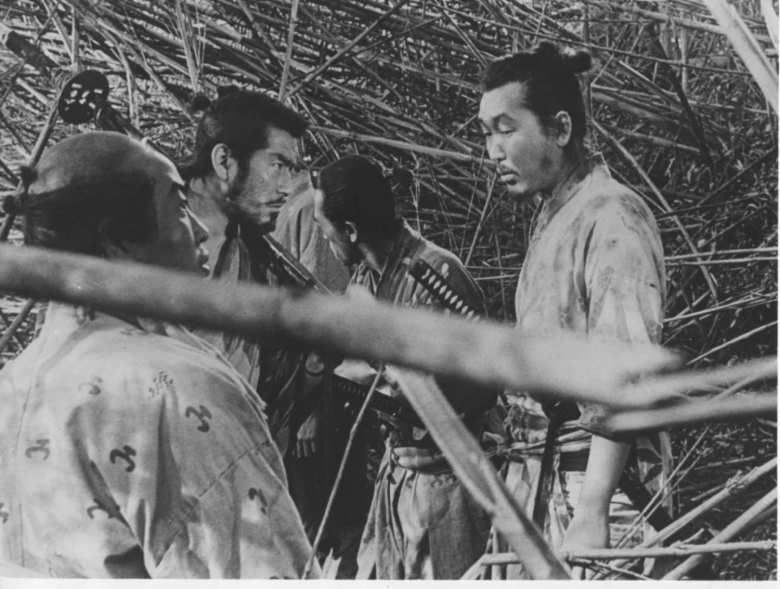

At the same time, it dignifies the Japanese people, by establishing parallels between the defeated people and the brink of disaster, with post-war Japan. As the action progresses, Kurosawa manages to link the idea of responsibility for the reconstruction of the country with a collective initiative. Gradually, the film, which begins as a drama of manners, turns into an epic. One, in which the Japanese identity is shown in all its ferocity and capacity for redemption. What turned the film into a piece that dazzled and excited the country.
The best of Akira Kurosawa
For Kurosawa, creating a moral epic, without it being preachy or nationalistic, became a challenge. Particularly because with Rashōmon (1950), he had already reached similar conclusions. Much more, to the extent that the drama with uplifting overtones could also be a political look at Japan. However, for the director, The idea was more focused on exploring the reasons to continue, when, apparently, there are none to do so.


So, he built a visual section of highly contrasted black and white, in which the battle is more complex than just preventing the town at the center of the conflict from being razed. Likewise, these are considerations for Japanese society and culture, in their lowest moments. So there are scale games to suggest social differences that end up being destroyed or disappearing in the need of battle. At the same time, the argument analyzes the idea of losers and winners — of war, in life — from the emotional.
But it is the precise attention to the action scenes that makes the film a classic, which still remains unmatched. The camera follows the samurai and the peasants, becoming a witness to their exploits, triumphs and deaths. Slowly, the tape becomes more elaborate in symbols. Which includes the way deaths are done, a way of understanding loyalty and the pursuit of good. A combination that provides The seven samurai several of his best moments.
A look at a society in crisis
Although not strictly political, The seven samurai elegantly analyzes Japan’s social wounds. She also does so through the mythical figure of its feudal warriors, who have become legends in the history of the country.


However, this time, the samurai are not just heroes, which they eventually become. At the same time, they express the disillusionment of the average Japanese. That, after the nation’s fall from grace amid the pains of the postwar period.
Kurosawa achieved it with a simple resource. Being a group of rónins, those in charge of training the people in disgrace, they also seek their own salvation. Japan, which at the time of the film’s release was going through one of its worst times, found in it the highest and lowest points of its culture. But, at the same time, a way of understanding that the painful past he faced, It was part of their history and thus had to be analyzed.
In the end, a film for the history of cinema
With 70 years of release, The seven samurai, continue to be an exceptional combination of Japanese culture and the best action cinema. From the creation of a new style — the director integrated the use of telephoto lenses to give the film its special aesthetics — to the use of several cameras. The truth is that the film revolutionized the way of narrating in cinema and took it to a new level.
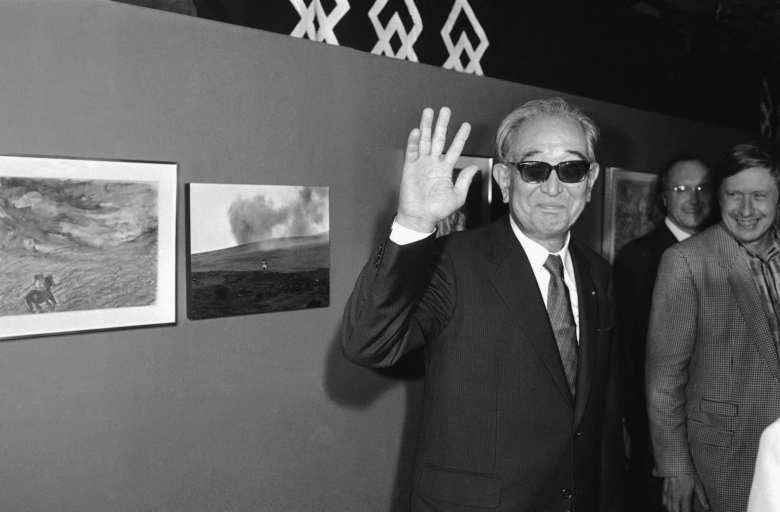

But beyond that, for Kurosawa it was really about capturing a special mood of post-war Japan. The ability to overcome the pain of his wounds and find his place in the world again. Something that the film shows in all its splendor andmakes it a gem of the seventh art.


